Herb cinquefoil: varieties, planting and care recommendations
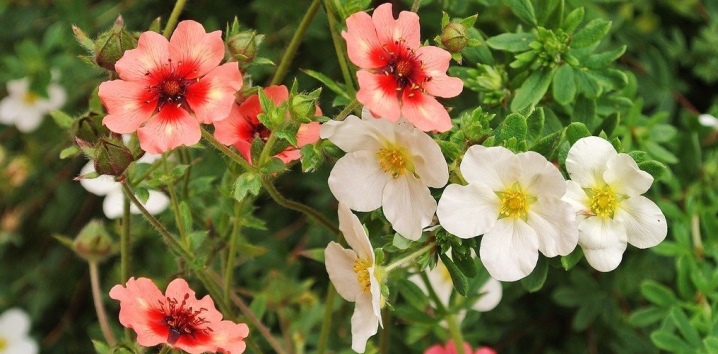
Cinquefoil is widespread, this culture has a huge number of varieties and species. Since the plant has a spectacular appearance, it is often used in the design of suburban areas. But for successful cultivation, it is necessary to understand agricultural technology and know the basic rules for caring for perennial plant varieties.
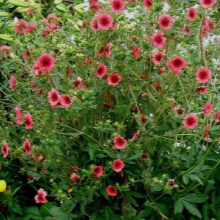
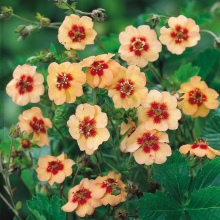
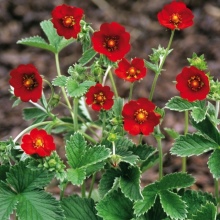
Varieties and their description
Herbaceous cinquefoil has many species and varieties, differing in the color of petals, leaves and crown shape. The most popular and most commonly grown are perennial varieties.
- Cinquefoil native to Nepal - a perennial species 60 cm high with straight branches, large dark green leaves and pink (sometimes red) flowers, collected in cluster inflorescences. Famous plant varieties: "Miss Wilmont" with pinkish-burgundy flowers, "Roxana" - with petals of a delicate orange tone, "Gibson Scarlet" - terry grass, the owner of raspberry and carmine corollas, "Floris" - flowers have a pale pink color with bright -Orange eye.
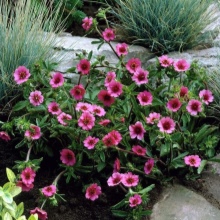

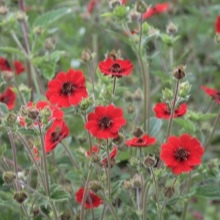
- Low-growing hybrid cinquefoil "Emilia" has semi-double red flowers and leaves with yellow blotches. Ideal for creating an alpine slide.

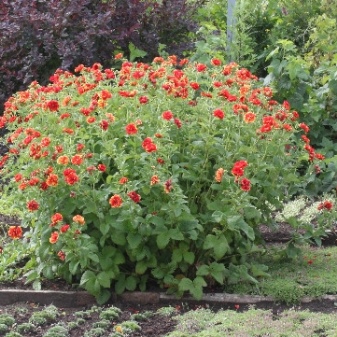
- Goose cinquefoil - a plant with large leaves up to 20 cm long and single flowers of a rich yellow color.
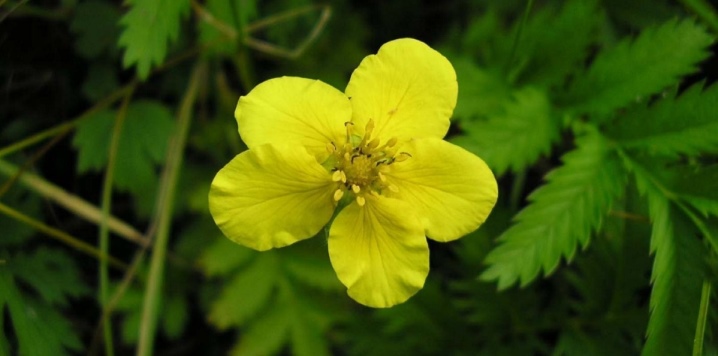
- White dwarf cinquefoil no more than 25 cm in height, the features of which are the absence of peduncles and white small flowers.
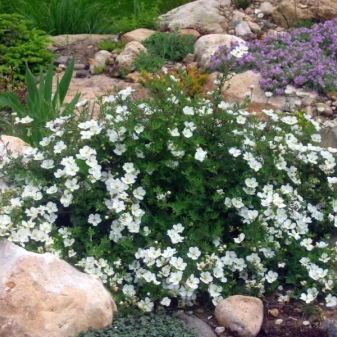

- Beautiful yellow color of flowers inherent in silver cinquefoil. The flowers themselves are small, but form beautiful lush panicles.
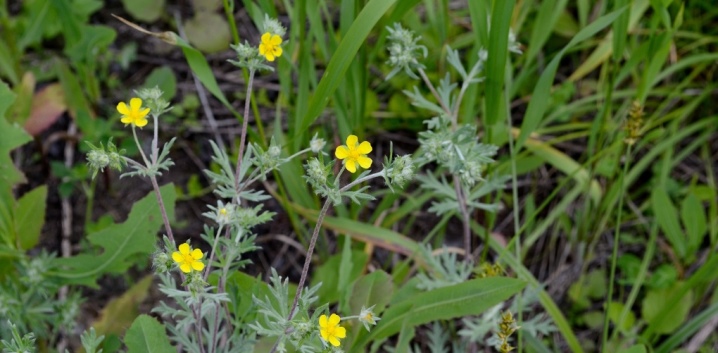
The shrub species is represented by the following plants:
- five-leafed Daurian - a compact bush with single light flowers 2 cm in size;
- shrubby five-leafed plant is an unpretentious variety, reaching 1.5 m, with golden yellow flowers.
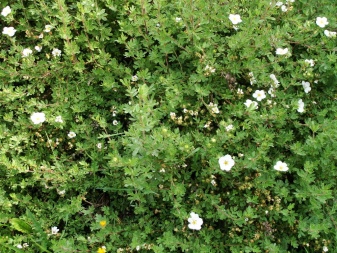
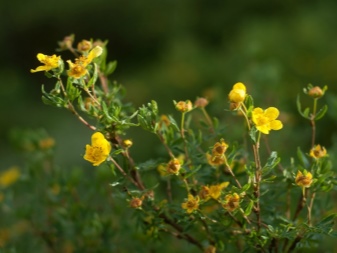
Of the low varieties, the following are popular:
- "Jolina" and "Reinesenberg", which are characterized by a bright yellow-orange color of the petals;
- "Rodokeliks" with beautiful snow-white flowers.
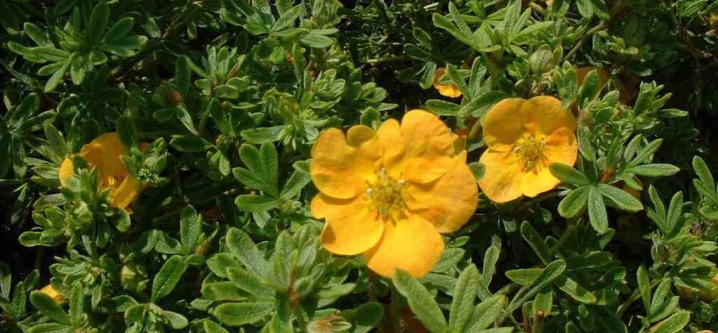
Among tall plants stand out "Elizabeth" and "Catherine Dykes" with yellow flowers.
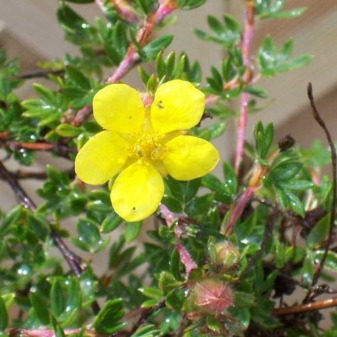
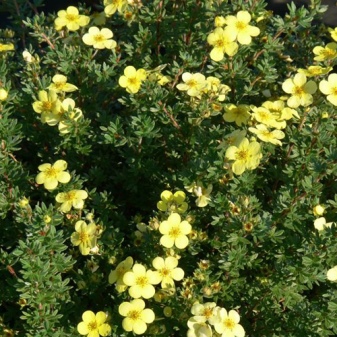
The most cold-resistant shrubs this species - "Darts Golddigger", "Goldterppich", "Bisi" with silvery foliage.
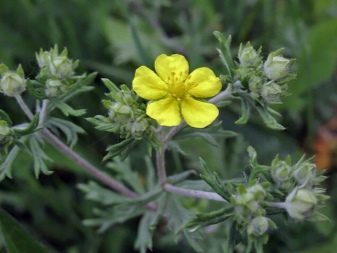
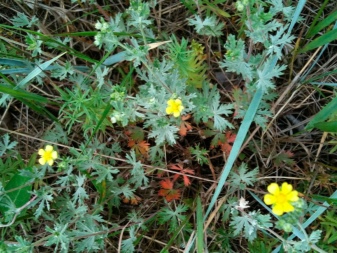
Heat-loving low varieties - "Pritty Polly", "Blink" (pink flowers), "Eastleigh Cream" with cream inflorescences.
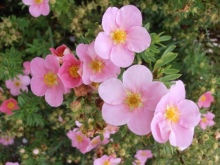
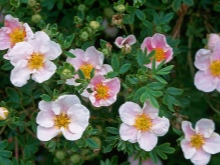
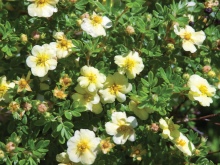
Landing rules
With the exception of some species, herbaceous perennial cinquefoil loves moderate lighting and light shading.
Ideal for planting - areas where open space is combined with the presence of garden plants that can create shade in the afternoon.
The preferred soil for culture is fertile, loose soil with low acidity. Heavy clay soils must be diluted with humus, garden or leaf soil and peat. In addition, the composition should contain a small amount of lime.
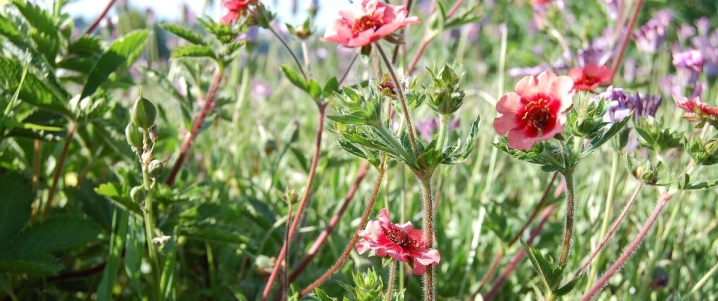
When propagated by seeds, they are sown in late February-early March in large containers and create greenhouse conditions, covered with a film. Seedlings appear at a temperature of 15-18 degrees Celsius. When the first leaves are formed, they should be transplanted into separate containers. The root system develops in plants by the end of August, and then they can be planted in open ground.Before the onset of cold weather, young plants are protected with shelters, and the flowering of the culture can be expected next year.
You can also propagate different types of Potentilla by cuttings, layering and dividing adult bushes, this can be easier than growing from seeds.
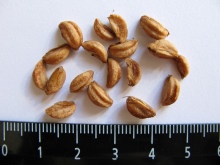
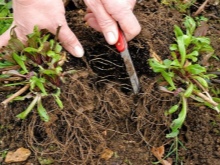
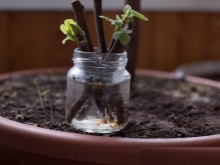
Planting ready-made seedlings has its own specifics. It is held in the spring, when the earth has warmed up, and frosts are no longer expected. The procedure requires observance of the basic rules of agricultural technology related specifically to this crop:
- a hole is dug with dimensions exceeding the volume of the roots by half;
- when planting several bushes, gaps of 30 cm are left between them;
- the bottom is laid out with gravel (as drainage);
- the nutritional mixture for most perennial cinquefoil consists of leafy soil, river sand and humus, mineral additives and wood ash are added there in the amount of 150 g per hole;
- the seedling is placed in the center, leaving the root collar above the ground, and after tamping it is watered abundantly;
- so that the water does not evaporate too quickly, it is recommended to mulch the ground with a layer of sawdust, straw and coniferous bark.
It is important to repeat moderate moistening of the soil in the near-stem zone of each plant every 2 days for 2 weeks to prevent drying out. In the future, young cinquefoil requires the same care as adult bushes.

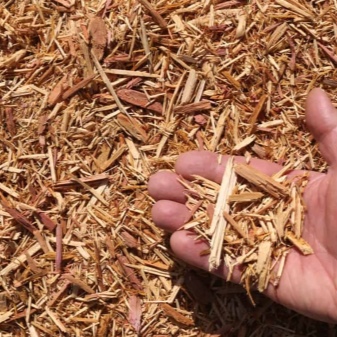
Features of caring for perennial species
For fast growth, abundant flowering and development of Potentilla it is important to carry out all agricultural procedures on time.
- The grass develops rapidly and quickly begins to form buds with good watering - the ground under the bushes should always be sufficiently moistened. It is necessary to monitor the condition of the soil on hot days without precipitation. At the same time, the quality of the water is no less important: it is extremely undesirable to irrigate the soil with tap water - you will need to settle the liquid, and rainwater, which can be drawn into a wooden barrel, is also suitable. Each time you water, you need to loosen, remove weeds and renew the mulch layer.
It is better to water the cinquefoil early in the morning or in the evening, after sunset.
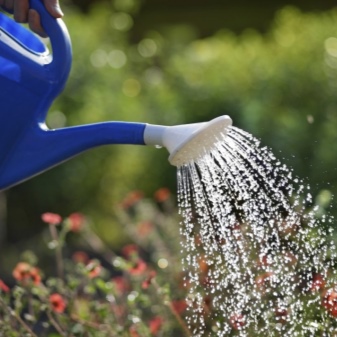
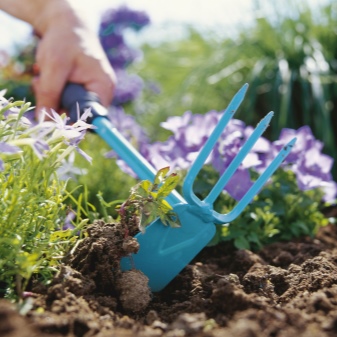
- You need to feed the plant several times per season. From organic fertilizers, rotted manure and compost are suitable, but mineral additives are also necessary. After winter, various types of perennial Potentilla require inorganic compounds containing potassium sulfate and phosphorus. The formation of flowers will also require the use of complex products containing basic trace elements.
It is advisable to recharge the soil in May, July, early September.
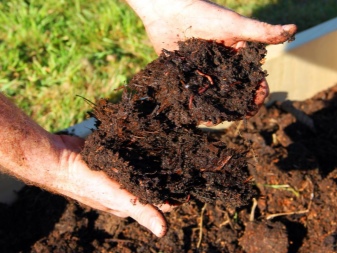
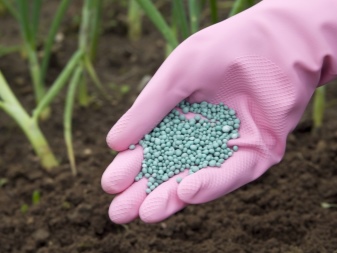
- Plant pruning serves three purposes: removal of weak, diseased and damaged shoots, thinning of the crown and giving it a certain decorative shape (pillow-shaped or spherical). To do this, in the spring, before sap flow, the branches are cut by 1/3, and in the fall, old and too long shoots are shortened. Once every 3 years, 1/3 of all dried branches are removed - this is necessary to rejuvenate the bush.
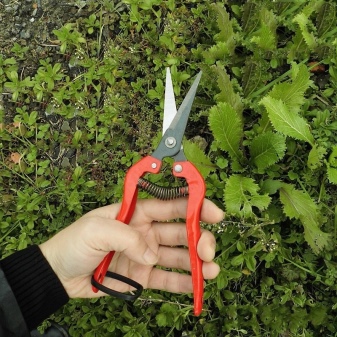
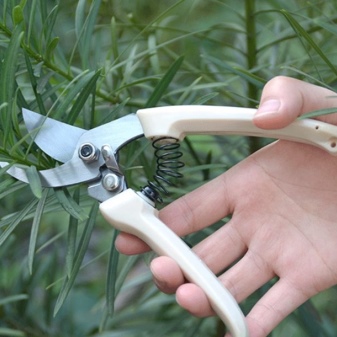
- Preventive treatment necessary for the culture, since it is susceptible to powdery mildew, rust and spotting. Perennial varieties are sprayed with a solution of colloidal sulfur and Bordeaux liquid.
In case of an invasion of scoops and other insects, insecticidal preparations are used: Fitoverm, Decis Profi, Fufanon.
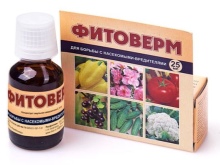

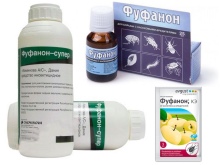
- For the winter, annual plants are simply harvested., shrub varieties are cut by 1/3, treated with a solution of copper sulfate and mulched.
Adult perennial grasses, as a rule, do not cover, but it is recommended to protect young seedlings with coniferous spruce branches.

Use in landscape design
The decorative properties of Potentilla are widely used in garden design. Shrub and herbaceous varieties of plants help to effectively and original transform flower beds and flower beds, create fancy compositions with different species of trees and shrubs, conifers. Cinquefoil looks beautiful as a single decoration of the lawn, and in a group with its relatives, creating curbs, hedges, framing garden paths. The culture is used for planting greenery in parks in the city limits, it allows to build ensembles of unique beauty with stones, other flowers and herbs.
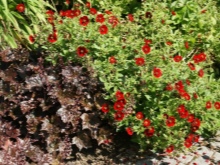
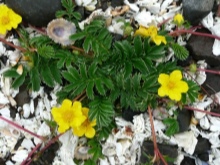
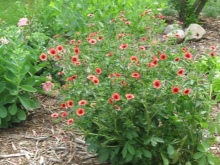
Until now, thanks to its rich plant composition, which includes flavonoids, vitamins, essential oils and bitterness, cinquefoil is used in folk medicine to treat skin diseases, infections, diseases of the digestive organs and other ailments. It is difficult not to fall in love with a plant so generously endowed by nature not only with beauty, but also with qualities that are useful for human health.
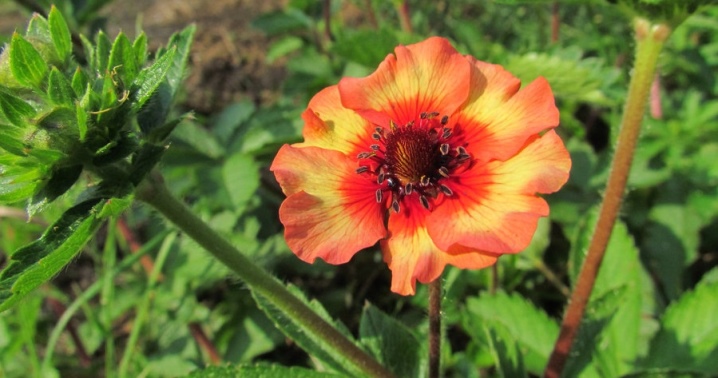
Find out the features of buying, growing and breeding grassy Potentilla by watching the following video.



































































The comment was sent successfully.